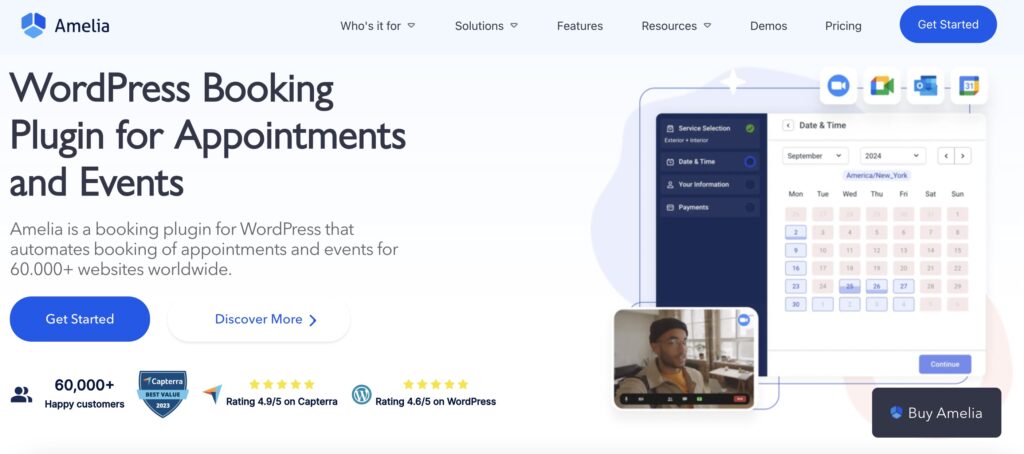Confirming appointments is a crucial aspect of running a successful service business. Whether you’re a salon owner, consultant, or healthcare provider, ensuring that your clients are reminded and ready for their scheduled appointments can significantly reduce no-shows, enhance client satisfaction, and improve overall business efficiency.
But how exactly should you confirm appointments? Is there a difference between formal and informal confirmations? And what are the best practices to follow?
In this article, we’ll dive deep into how to confirm an appointment effectively, covering both informal and formal approaches, and providing you with actionable steps, examples, and practical tips. By the end, you’ll have a comprehensive understanding of how to handle appointment confirmations and how you can streamline the entire process.
Why Should You Confirm Appointments with Clients
Confirming appointments isn’t just about reminding clients of their upcoming visits. It’s a vital part of the customer service experience that builds trust, ensures clarity, and minimizes last-minute cancellations. Here’s why confirming appointments should be a non-negotiable part of your business routine:
- Reduces No-Shows and Cancellations: Sending a confirmation gives clients a nudge to remember their appointment, reducing the likelihood of no-shows. It also gives them a chance to cancel or reschedule in advance if something comes up, freeing up your time for other clients.
- Reinforces Professionalism: A well-crafted appointment confirmation message reflects your business’s professionalism and reliability. It shows that you’re organized, value the client’s time, and are committed to providing a smooth service experience.
- Improves Communication: Confirmation messages help clear up any potential misunderstandings about the appointment details, such as the time, location, or services provided. This ensures both you and your client are on the same page, avoiding confusion on the day of the appointment.
Different scenarios call for different types of confirmations. For instance, a first-time client might appreciate a more detailed appointment confirmation, while a regular client might just need a quick reminder. Understanding when and how to confirm appointments can make a significant difference in your client relationships.
How to Confirm an Appointment: Steps to Follow

Now that we’ve established the importance of confirming appointments, let’s break down the key steps involved in the process.
1. Choose the right method
The method you choose to confirm appointments depends on your business model, client preferences, and the nature of the appointment. Here are some common methods:
Appointment confirmation email
An appointment confirmation email is ideal for detailed confirmations where you need to include a lot of information. It’s also less intrusive, making it suitable for clients who prefer written communication.
Appointment confirmation text message
An appointment confirmation text is quick, direct, and has a high open rate. It’s perfect for reminders close to the appointment time but might lack the detail that an email can provide
Phone call
Phone calls offer a personal touch and are great for confirming high-stakes or first-time appointments. However, they can be time-consuming and may interrupt the client’s day.
App notifications
If your business uses a booking system, sending an automated notification can be an effective way to confirm appointments. It’s instant, saves time, and keeps all communication within your branded environment.
2. Choose the right timing
The timing of your confirmation plays a crucial role in its effectiveness.
The first step is to send an initial confirmation immediately after the appointment is booked. This should include all the essential details (date, time, location, service).
Depending on the nature of your services, a follow-up confirmation may be appropriate. This could be sent a few days before the appointment for services booked well in advance. The follow-up serves as a secondary check-in to remind the client of their commitment and provides an opportunity for them to make any necessary changes.
For appointments booked on the same day, or for high-value services, a day-of confirmation can be beneficial. This type of confirmation is typically brief and focuses on reminding the client of their appointment later that day.
The key is to strike the right balance between ensuring the client is well-informed and not overwhelming them with too many messages. For instance, if the appointment is booked within 24 hours, one confirmation may suffice, while longer lead times might benefit from an initial and a follow-up confirmation.
3. Include all the necessary details in your appointment confirmation
A good appointment confirmation is clear, concise, and covers all the necessary details. Here’s what you should include:
- Client’s Name: Personalizing the message with the client’s name makes it feel more tailored and less like a generic reminder.
- Appointment Date and Time: Ensure this is prominently displayed so there’s no confusion about when the appointment is scheduled.
- Location: If your business has multiple locations, specify where the appointment will take place.
- Service Details: Briefly mention the service(s) the client has booked. This serves as a reminder and helps avoid any misunderstandings.
- Contact Information: Include a phone number or email address where the client can reach you if they need to reschedule or have questions.
- Cancellation/Rescheduling Policy: If applicable, remind clients of your policy on cancellations and rescheduling, including any deadlines or fees.
Example:
Hi [Client’s Name],
This is a reminder of your upcoming appointment on [Date] at [Time] for [Service]. We look forward to seeing you at [Location].
If you need to reschedule or cancel, please contact us at [Phone Number] at least 24 hours in advance.
Thank you!
[Your Business Name]
Looking for more templates and examples like this?
Don’t worry – we’ve got you! Check out some of the best appointment confirmation email templates and appointment confirmation text templates we’ve prepared just for you!
4. Personalize your message
Adding a personal touch to your confirmation messages can go a long way in building rapport with your clients. Here’s how to do it:
- Acknowledge Repeat Clients: If the client has visited you before, mention it! A simple “We’re excited to see you again” can make the client feel valued.
- Customize Based on Services: If the client is coming in for a specific service, personalize the message by mentioning something relevant. For example, “We’ve got everything ready for your facial treatment” adds a nice touch.
- Use Friendly Language: Even if the message is primarily informative, using friendly and approachable language can make it feel less transactional and more engaging.
How to Confirm an Appointment Informally
An informal approach to confirming appointments can be more relaxed and suitable for businesses with a casual brand tone or regular clients who prefer a laid-back communication style. Here’s when and how to use it:
When to use an informal appointment confirmation
- Regular Clients: For clients who visit often and are familiar with your business.
- Casual Business Types: If your business operates in a more relaxed industry (e.g., beauty salons, fitness trainers).
- Text or Chat Platforms: Informal confirmations work well over text messages, WhatsApp, or other chat platforms where brevity and casual language are the norms.
Tips for maintaining professionalism in informal confirmations
Be Clear: Even in informal messages, clarity is key. Ensure all necessary details are included.
Keep it Brief: Informal messages should be short and to the point.
Maintain a Friendly Tone: While being informal, avoid slang or overly casual language that could be misinterpreted.
How to Confirm an Appointment Formally
In some situations, a formal confirmation is more appropriate. This is especially true for high-stakes appointments, new clients, or industries where professionalism is paramount.
When to use a formal appointment confirmation
- First-Time Clients: When dealing with new clients, a formal approach helps establish a professional tone from the outset.
- Professional Services: Industries such as legal, medical, or corporate consulting often require a more formal communication style.
- Important or High-Value Appointments: For consultations, important meetings, or any appointment where the stakes are high.
How to maintain a professional tone
Use Formal Language: Avoid contractions and use complete sentences.
Be Polite and Respectful: Formal confirmations should reflect courtesy and respect towards the client.
Be Precise: Ensure every detail is correct and clearly stated.
If you’re interested in seeing how informal and formal appointment confirmations look in action, be sure to take a look at our appointment confirmation email templates and appointment confirmation text templates we’ve prepared just for you!
Use Amelia to Simplify Appointment Confirmations
Amelia is an all-in-one booking plugin designed to make appointment confirmations effortless and efficient. Whether you’re a small business owner or managing multiple locations, Amelia offers a range of features that can streamline your appointment confirmation process and ensure that your clients are always informed and prepared.
With Amelia, you can automate your appointment confirmations, saving time and reducing manual errors.
Here’s how to confirm an appointment with Amelia:
- Automated Confirmations: Once an appointment is booked, Amelia automatically sends a confirmation via email or SMS, tailored to your brand’s style and tone.
- Customizable Templates: Amelia allows you to create custom templates for both informal and formal confirmations. You can personalize these templates to match your brand’s voice and include all necessary details.
- Reminder Settings: Set up automatic reminders to be sent at specific intervals before the appointment. Amelia gives you control over the timing and frequency, so you can ensure that your clients are reminded at the right time.
Key Features for Effective Confirmations
- SMS and Email Notifications: Amelia supports both SMS and email notifications, ensuring that your clients receive their confirmations through their preferred channel.
- Personalization Options: Use dynamic fields to personalize each confirmation with the client’s name, appointment details, and other relevant information.
- Recurring Appointments: If your clients have recurring appointments, Amelia makes it easy to set up ongoing confirmations and reminders, so you don’t have to manage them manually.
Why Choose Amelia?
Using Amelia for appointment confirmations not only simplifies the process but also enhances your client communication. Compared to manual methods or other tools, Amelia offers:
- Efficiency: Automate repetitive tasks and reduce the risk of human error.
- Consistency: Ensure that every client receives a confirmation that is consistent with your brand’s messaging.
- Scalability: Whether you’re managing a single location or multiple branches, Amelia scales with your business, offering robust features that grow with you.
What are you waiting for – take Amelia for a test ride and see how it can transform your business!
Conclusion
Knowing how to confirm an appointment is more than just a courtesy—it’s a vital part of running a successful service business. By following the steps outlined in this article, you can ensure that your clients are informed, prepared, and less likely to miss their appointments. Whether you opt for an informal or formal approach, the key is to be clear, timely, and consistent in your communication.
Amelia offers a powerful solution to simplify and automate your appointment confirmations, freeing up your time and enhancing your client interactions. Don’t leave appointment confirmations to chance—experiment with different approaches and tools like Amelia to find what works best for your business.
By mastering the art of appointment confirmations, you’ll not only reduce no-shows but also build stronger, more reliable relationships with your clients.

